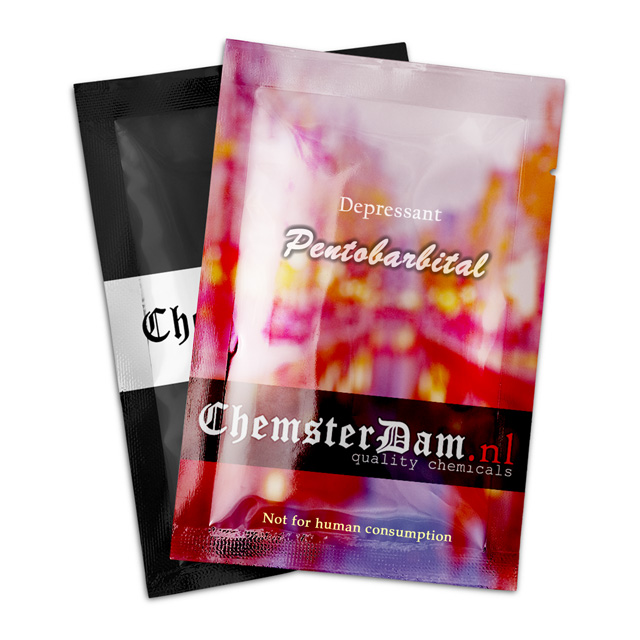| property | value |
|---|---|
| Common names | Pentobarbital, pentobarbitone, Nembutal |
| Systematic name | 5-Ethyl-5-(1-methylbutyl)-2,4,6(1H,3H,5H)-pyrimidinetrione |
| Psychoactive class | Depressant |
| Chemical class | Barbiturate |
pentobarbital, also known as pentobarbitone in british english and by the brand name nembutal, is a short-acting psychoactive drug of the barbiturate class which produces powerful anxiolytic, hypnotic, muscle relaxant and amnesic effects. pentobarbital is used medically as a hypnotic for the short-term treatment of insomnia and as an anticonvulsant in emergency situations. pentobarbital is also used to put patients into medically induced comas. pentobarbital works in a similar fashion to benzodiazepines, however barbiturates bind to a distinct allosteric site on the gabaa receptor.
compared to other barbiturates such as phenobarbital, pentobarbital has a prompt onset of action, generally working within fifteen minutes of ingestion. pentobarbital’s anxiolytic effects may last for up to 36 hours after the primary effects have worn off.
pentobarbital, like most short-acting barbiturates, is deemed to be extremely addictive. the abrupt discontinuation of pentobarbital in dependent individuals may be life-threatening and lead to seizures and even death. pentobarbital drastically enhances the effects of other depressants such as alcohol, and concurrent use may lead to respiratory depression and possibly death.
chemistry
pentobarbital is a drug of the barbiturate class. barbiturate drugs contain the backbone of barbituric acid. pentobarbital has a 5-ethyl, 5-methylbutyl substitution on the 5-position of the barbituric acid backbone which gives it its unique pharmacological effects. pentobarbital’s empirical formula is c11h18n2o3 and has a molar mass of 226.27 grams per mole.
pharmacology
barbiturates behave similarly to benzodiazepines. pentobarbital binds to an allosteric site on the gabaa receptor and potentiates the effects of the endogenous ligand, gamma-aminobutyric acid. when barbiturates bind to the gabaa receptor, it causes the ion pore to open for extended periods of time, causing an increase of intracellular chlorine ion concentrations. as this site is the most prolific inhibitory receptor set within the brain, its modulation results in the sedating (or calming effects) of barbiturates on the nervous system.
pentobarbital has a bioavailability of 70-90%. 45-60% of pentobarbital will bind to proteins. its biological half life is 15-48 hours. pentobarbital is metabolized by the liver and excreted by the kidneys.


Natan –